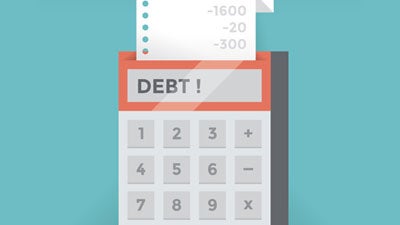
No matter where you go or what you are doing in America, debt seems to be a part of the world we live in. America is a debtor nation and that refers to a lot more than the national debt that currently sits at about $18.2 trillion according to the National Debt Clock. In fact, debt has an effect on our personal and business lives a good deal of the time.
Consumer Debt
Consumer debt is associated with the individual. It includes debt created by credit cards, car loans, and unsecured personal loans. Since mortgages and student loans are secured by viable assets or create intrinsic value, they are viewed differently than what is typically considered to be debt on things that lose or have no real value except to those who are buying them. Based on figures released by the Federal Reserve in 2014, Americans carried total debt of $11.3 trillion with approximately $882 billion of that applicable to credit cards.
Business Debt
Business debt, also referred to as commercial debt, is debt owed by businesses. It can also be secured or unsecured, but follows slightly different guidelines. Most businesses have to borrow money in order to create working capital. Secured debt is usually back by a building or major pieces of equipment while unsecured debt usually comes from the owner’s credit cards or from business loans made by banks or private lenders.
Related Article: Budgeting to Stay Debt-Free
Consumer Debt vs Business Debt
In many ways, consumer and commercial debt are quite similar. However, there are some material differences that should be pointed out.
- Credit Approval Process – For consumer credit, lenders will typically look at the individual’s FICO score in order to determine whether or not the individual is worthy of risk. For commercial credit, the lender is going to look at a variety of things. In the case of a small business or sole proprietorship, lenders will typically look at the owner’s personal credit score. Additionally, they might request to see financial reports for established businesses. These reports could include a balance sheet, income statement, and statement of cash flows. They might also request tax returns and debt to equity calculations. All of this information is compiled to determine the viability of the business, which is done to avoid unnecessary risk or to establish interest charges that are commensurate with the risk.
- Uses – Consumers incur debt for a variety of reasons. They might use credit cards to pay for vacations, clothing, food and transportation costs (gas and auto repairs). The can also use credit cards or personal loan proceeds to cover emergency medical expenses or living expenses such as rent and utilities. Once the credit is established, the proceeds can be used for most anything. Commercial debt is a bit more restrictive. A business is going to use its loan proceeds as working capital to operate the business as dictated by credit agreements. This could include paying salaries, operating costs, purchasing raw materials or capital equipment.
- Debt Collection – When the debt becomes a problem, the debt collection process is quite different. Debt collectors are restricted by law on how they can attempt to collect from individuals. These restrictions are in place to assure that individual rights and liberties are not violated. When going after business debt, the policies are less restrictive because it is assumed that business owners have a higher level of sophistication and accountability as it pertains to dealing with debt issues.
If you would like more information about the differences between consumer and business debt, our debt counselors at Rescue One Financial are available for a consultation. They are prepared to help you understand the differences these two kinds of debt and nuances presented by each. Before you enter into any kind of debt situation, this information could save you from debt problems in the future.
This article was originally published by Rescue One Financial
Author: Brad Smith is CEO and co-founder of Rescue One Financial, headquartered in Irvine, California. Rescue One Financial helps individuals resolve unsecured debt during troubling times and have settled over $3.1B in debt. Brad’s 18-year financial services career includes Wall Street with Merrill Lynch, where he helped pioneer the restricted stock diversification business at Morgan Stanley. Smith still holds all of his licenses today (Series 7, 31, 63, and 65). Brad blogs twice per week on the Rescue One Financial web site, has authored a number of published articles, and is a regular guest contributor to US-based radio and television financial programs. Brad holds a BA in Economics from the University of Southern California.
Published: July 21, 2015
3578 Views
3578 Views












